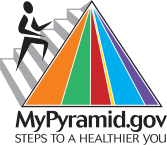Our youngsters are receiving much less physically active, as well as the population in general is starting to become increasingly more obese. Both of these assertions are undisputed fact. And they are directly connected. Regrettably, children who aren’t in the practice of getting adequate exercise and exercise at a early age often carry that conduct right through to adulthood. It truly is an awful shame, as exercise for youngsters is much more fun than exercise for adults! The issue at this point is not if your children really should be getting physical exercise, but rather how much?
Physical activity helps a child’s physical development. Not only does it keep them lean and healthy, but it promotes strong bones and muscles, contributes towards improved cardio and endurance, and encourages more flexible limbs and joints. All of these aspects can help improve your child’s overall health as they mature into young adults, and eventually, adults. And the joy here is that physical activity can be anything from running with friends, going for a bike ride, or even playing football in the park!
So just how much physical activity are we talking here? Well, general guidelines would suggest that babies and infants need not worry about their level of physical activity. While inactivity can be a problem, infants will be as active as they feel like and are comfortable with. Any activities here should focus on encouraging their basic motor skills.
As infants develop into toddlers, it is important to start monitoring and ensuring that physical activity is taking place. General play, toddling around the house and following mummy around the kitchen all count as physical activity, and your toddler should be doing this for around 1 hour per day. Additionally, it is worthwhile planning specific physical activities each day for 20 to 30 minutes. This could be playing with balls in the garden or using a ride-on around the house.
As your toddler reaches pre-school age, they will generally still be getting enough non-planned physical activity. The important thing here is to scale up the level of planned physical exercise and activities. Instead of taking 20 – 30 minutes, you should increase this to around an hour. This might mean going for a walk to the shops, playing a number of games in the garden, or even letting your child choose between a selection of physical games to play for the hour.
Instilling this practice of physical activity from a young age will encourage your child to associate physical activity and physical exercise with the routine of a normal day, and will ensure that they have a healthy approach to exercise as they grow older. If you are making it fun for your child, they won’t even notice that the activities are planned, and you will have a happier, healthier child.
